As readers, Challengers, and Members of the Yakezie Network we LOVE personal finance, saving, and being smart with our money. We actually enjoy setting goals to pay down debt, build our retirement accounts, invest, and save on day to day expenses. We also know that being frugal is cool, and doesn’t mean we’re “cheap.” We know there is a difference!
One of my favorite things about money in general is coins. Say what? Yes, coins! You might think I’m crazy, but I’m going to share with you why money and investing is more fun with coins. And I hope my love of coins will rub off on you a little bit today because coins are really quite fascinating.
What’s So Exciting About Coins?
Most of you probably don’t know that I like to collect things. When I was a kid I started out collecting toys like Cabbage Patch Kids, legos, Barbies, and Troll dolls. As I got older, I grew into collecting quite a massive supply of U.S. and international stamps and coins.
How did it all start? Well one day when I was visiting my grandparent’s house many years ago, I was looking for board games in my dad’s old room. Digging around for game pieces and dice, I found a quarter in my dad’s old dresser drawer. It’s ribbed edges were gone! I’d never seen anything like that before and wondered if I’d just stumbled on a valuable treasure.
How One Quarter Sparked My Love Of Coins
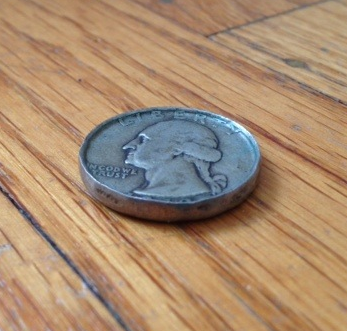 I ran to find my dad and asked where he got it from. He recognized it right away and smiled. Turns out it was just a regular quarter my dad decided to customize as a young lad by hammering the edges flat by hand. That effect that created was an indented coin with a smooth, enlarged outer ring.
I ran to find my dad and asked where he got it from. He recognized it right away and smiled. Turns out it was just a regular quarter my dad decided to customize as a young lad by hammering the edges flat by hand. That effect that created was an indented coin with a smooth, enlarged outer ring.
My dad has always been one to tinker with things and I felt I had found a piece of his childhood in that quarter. “Wow, that’s so cool!” I remember saying to him and was ecstatic when he let me keep it. From that point on I started studying coins, looking at the intricacies of their designs, and appreciating them like art. My parents saw how much I liked coins and soon introduced me to silver dollars and foreign coins from their past travels. I was hooked.
Most people hate coins because they’re heavy to carry around, get dirty, and make your fingers smell like metal. While that’s true there are so many more pros about coins. I find their incredibly long history, beauty, intricacy, monetary value, and artistic qualities incredibly fascinating. Coins date all the way back to 600 B.C.!
Coin Collecting As A Hobby Versus As An Investment
I never started collecting coins as an investment. I did it purely out of fun. Even though some of the coins I have are 40, 50, 60 years old they really aren’t worth more than face value. Anyone can start collecting coins for fun as a hobby for virtually no cost. You can store coins in virtually anything if they’re circulated and you’re not worried about damage. I kept mine organized in 3 ring binders and bought some archival sleeves and coin pages to make it easy to view them.
Those of you who follow my blog Untemplater, know I love to travel and go on adventure vacations. Over the years I started keeping my loose change as souvenirs when I’d travel overseas. I have accumulated quite a lot of beautiful foreign coins now from a broad range of countries – Bermuda, Canada, Denmark, England, Italy, Japan, Mexico, etc. The designs, colors, and sizes are all so different! Since most money exchanges won’t accept coins, unless they’re in larger denominations like €2 or €5, foreign coins are fun to hang on to as keepsakes or tuck away for your next trip.
Coin collecting as an investment is quite different from the hobby collector. Investing in coins to make a profit can get very expensive and takes a lot of research and due diligence. If I had oodles of money I’d totally invest in rare coins and put them on display in my house like art. :) I’ve seen rare and ancient coins on exhibit at many museums and could easily stare at one case in amazement for hours. I find it incredible how something so tiny could survive for so long and be worth so much more over time. It’s much easier to put a coin in a safety deposit box too vs an expensive piece of art or historic artifact.
Investing In Gold Coins – Time To Buy?
Another way to invest in coins if you don’t want to go the rare or ancient route is gold, or even silver. Some of you may have invested in gold coins before and know there are MANY different types, sizes, and price ranges to consider. For example, you can get a 2013 American Eagle 1/10th Ounce Gold Proof Coin from the U.S. Mint for $180.00 or pay $1610.00 for one that’s a full One Ounce. That’s a big difference in size and weight.
If you’re interested in investing in gold coins, be careful who you buy from and make sure you understand what you’re buying and check that everything is authenticated. And watch the markets because prices can fluctuate a lot.
Take a look at the SPDR Gold Shares (GLD) chart below. Gold prices have dropped a lot in the last six months. That’s about a 26% drop!
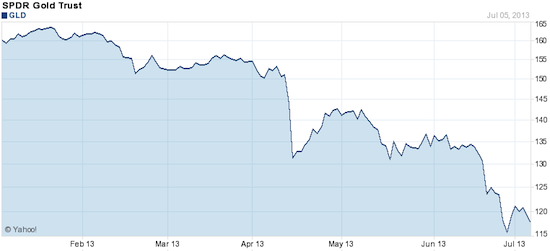
You can see there are a lot of risks with volatility and gold investing. If you want to take advantage of the price declines but don’t want to go through the process of actually buying gold coins or other forms of physical gold, consider the GLD. It’s an easy way to get exposure to gold without having to worry about shopping, authenticity, and storage of coins.
The Value Of Indian Head Pennies – Do You Have One Hiding In A Drawer Somewhere?
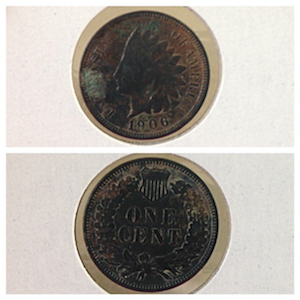
Did you know that Lincoln wasn’t always on the penny? He wasn’t put on the penny until the middle of 1909. Prior to that, the penny had a wreath on the back (with or without a shield depending on the year) and a silhouette of the goddess Liberty wearing a Native American headdress on the front.
1,849,648,000 of them were made between the years 1859-1909. That’s a lot of Indian Head Pennies, so it’s quite possible someone in your family still has one. So next time you stumble upon an old coin look at it closely before you toss into the parking meter!
I’m lucky enough to have had an Indian Head penny passed down to me. It’s not in very good shape as you can see in the picture to the left, but it’s still very exciting to have one because it’s a piece of history.
It’d probably look better if I cleaned it, but I’m afraid of causing damage with harsh chemical cleaners so I’ve left it be. My Indian Head penny was minuted in 1906 and given it’s condition, is probably worth about $0.75-$1.00. Although seventy-five cents to a dollar isn’t much to get excited about, considering it used to be worth just $0.01, that’s a nice rise in value!
The most valuable Indian Head pennies are from the years 1877 (current value ranges between $325-$3,000+) and those minted in San Francisco in 1909 (current value ranges between $225-$700+) due to limited production. The reason the price range is so broad is because uncirculated coins (upper price range) are so much harder to find. Circulated coins are valued based on good, fine, or extra fine condition, depending on how much wear, scratches, discoloration, corrosion, and dents they have.
Why You Should Roll Your Own Coins
Another reason I love coins, is I have so much fun piling up my loose change and rolling them into coin wrappers every couple months. I feel like a kid in a candy store. I get so excited checking to see how much I’ve accumulated. I usually collect between $20-40 in coins in one batch that I take to the bank and exchange for bills free of charge. My bank even gives out free coin wrappers!
This is why I refuse to use machines like CoinStar, which you’ve probably seen at the grocery store, because they charge so much in fees. It doesn’t feel right to me to lose money that I don’t have to. And since I roll my coins regularly, it’s fast and easy. I have a little machine of my own that sorts and counts my coins for me.
You can buy a battery operated or manual crank coin sorter for about $25-30 or you can go super basic with a simple plastic coin counters for $5-10 bucks. I think it’s worth the cost to at least get a plastic organizer vs having to hand count every single coin. If you have kids you can get them to help and even share some of the money with them.
Fun Facts About Coins
Hopefully I haven’t bored you yet. I could talk for hours about coins because I love them so much! Here are a few fun facts about coins.
Medieval coins represented the value of the metal they were made from such as silver and gold. This continued through the Middle Ages and the Early Modern period.
Early coins during the Iron Age in Lydia were issued by priests and were made in the image of symbolic animals with no inscriptions on them.
U.S. pennies were not made from copper until the 1790’s. Prior to that they were silver.
The number of coins produced from one year to the next can vary quite a lot. Take a look at the below sample of total coin production per year in the U.S. You can see we are on a downward trend.
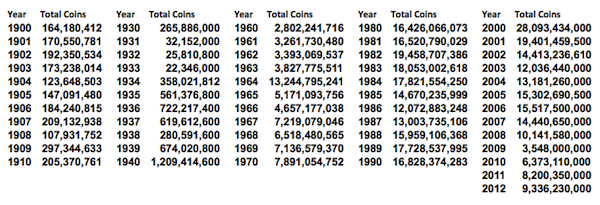
United States Mint only produces circulating coins in the Philadelphia and Denver Mints. The three other Mint facilities, San Francisco, Fort Knox, and West Point are used for storage, production of commemorative pieces, and proof coinage.
 Currently all coins in circulation must have these inscriptions by law: “Liberty,” “In God We Trust,” “United States of America,” “E Pluribus Unum,” the coin’s denomination and year of issuance. You’ll also see a letter indicating which Mint the coin was produced in, “D” for Denver or “P” for Philadelphia.
Currently all coins in circulation must have these inscriptions by law: “Liberty,” “In God We Trust,” “United States of America,” “E Pluribus Unum,” the coin’s denomination and year of issuance. You’ll also see a letter indicating which Mint the coin was produced in, “D” for Denver or “P” for Philadelphia.
The majority of U.S. coins start out as a giant 6,000 pound coil of metal that’s about 12 inches wide and 1500 feet long. Blanks are punched through, then heated, washed, dried, given raised edges, struck with the designs, inspected, counted, and bagged.
Have you ever collected coins as a hobby or investment? Do you have an Indian Head penny? Anyone else out there love coins as much as I do?! :)
If you’d like to learn more about me and jumpstart your own un-template lifestyle, please swing by Untemplater.com and check out my articles on self-improvement, business, and entrepreneurship.
Looking to learn how to start your own profitable website? Check out my step-by-step guide on how to start a blog. It’s one of the best things I did in 2009 to help earn extra money and break free from Corporate America!

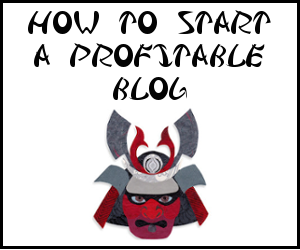
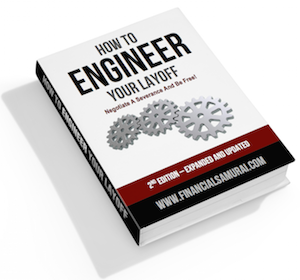


I began collecting coins back in 1997 when I studied abroad in China. I can’t believe 16 years have passed, but I should check on the value of my coins from all the dynasties.
They’ve got to be worth a lot now! I unfortunately lost my knife and shovel coins. I think a relative took it or something. Those would be worth huge bucks. Drat!
Time does fly by so quickly. Sorry to hear you lost those coins, augh what a frustrating situation, especially if it was taken by someone in your family. I saw a really cool ancient money tree at the Asian Art museum this weekend which was cool because it was decorated with what looked like hundreds of coins on the branches.
Hi! I really enjoyed your article! I just recently had a coin collection passed down to me and I know absolutely nothing about it. Are there any good websites for me to check out? I went to the .gov website, but that didn’t tell me a whole lot, unless I missed something. Also – how would you suggest finding someone to appraise the collection? I’m not looking to sell, but want to take the proper measures to keep it safe if I happen to have anything valuable.
Hi Laura, thanks and congrats on getting that family heirloom. If you want a rough idea of the value for insurance purposes you could head to your local library and see if they carry any of the pricing catalogs like Blue Book Handbook of United States Coins, Coin World, or Numismatic News. Next I’d suggest doing a search for a coin dealer or appraiser in your area as they will be able to gauge what condition your coins are in. Dealers are in business to make money so they typically won’t buy collections at full market value but they can help you identify which are the most valuable. Look for customer reviews and search for coin collecting groups in your area too for guidance and advice in your area. Good luck!
Thanks so much for the advice! I had never given much thought to coin collecting, but now that I have some in my possession, it’s definitely cool and I’m looking forward to learning more about it.
My brother collects $2 bills. When he worked in cash control he would buy them from the till when he found them. So far, he’s got about $50 worth.
I have a few $2 bills myself, they’re really cool. I love the design on the back of those bills. Some banks have them in stock too sometimes. I’d probably end up keeping the $2 bills if I got any bc they’re so unusual, but they definitely do save space in a wallet if someone wanted to actually get them for spending.
I had a coin collection when younger, then I stopped adding to it. Still have it, modest as it might be. At the time, I really did find the coins and the history behind them to be very cool. It will be interesting to see how we view coins in the future, with technology ever changing. Pennies are gone north of the border already.
And to answer your question, yes – I do have an Indian Head penny, a few. And Buffalo nickels, Mercury dimes….well, you get the idea.
Holy cow, Mercury dimes are sweet – I just googled what they look like. That’s awesome you have some!
I hope the US Mint continues to design new coins like they have for the quarters. I get so excited when I come across a new one. But yes, the future of coins is quite uncertain with all the technology and inflation.
I love collecting coins – my favorites are Kennedy Half Dollars. I almost have a fully complete set – all MS67 or higher and graded.
I’m so happy to hear there are fellow coin lovers out there! I love the Kennedy half dollars too. I like how they’re so large and heavy. I have a couple but they aren’t in the best condition. That’s awesome you have almost a complete set at that quality!
My father in law has been a sporadic coin collector. We priced part of his collection awhile ago, and although the coins are beautiful to look at, they weren’t worth too much.
Yeah it really depends on what you have, how rare it is, and what condition it’s in. At least you know how much some of the collection is worth now. Better that then to think it’s worth a lot more and get super disappointed when you try to sell it and can’t get much for it.
I have started to like coins with my BF, who has an extensive collection of Guatemalan colonial and modern coins. He researches the story of every coin and has become quite knowledgeable. For washing you can try baking soda, it doesn’t damage the coin.
I don’t own coins because I travel too much and wouldn’t know where to keep them, I invest in gold in the stock market only.
When I was an advisor I had a client who was a numismatist (sp?). I loved watching him wheel and deal coins for a living. He always had some really cool “product” laying around! I think you would have been in heaven.
Yep you got it right, numismatists. Sounds like a cool guy. I would have loved to watch him work and check out his inventory. Fascinating!
I never personally collected coins, however I have a collection of Indian Head pennies from my Dad. They cover the years between 1873-1909. Unfortunately, none are worth hundreds of dollars (individually), but I will keep them anyway. It is one of the few (personal) things I have from my Dad. I probably should have it professionally appraised.
WOW Indian Head pennies from the 1800s that is incredible! Even if they aren’t worth a lot each, that’s a real piece of history. What a fantastic heirloom!
Thanks for writing about such a fun and interesting topic. We have some coins from my parents and grandparents including some old silver dollars, and while they’re probably not worth much it’s fun to have that piece of family history. The gold valuation graph was eye-opening – talk about a volatile market! One more thought I’ll add is that if you live in or travel to Denver or Philadelphia, the U.S. mints give free tours and it’s quite interesting to see the coins being made. We went to the Denver mint in March and my son loved it.
The gold chart is crazy isn’t it?! I didn’t get a chance to go to the Mint’s when I visited Denver and Phili in the past but I hope to get there one day. That’s awesome you took your son for a tour. I’ve watched videos to get a taste of it and it’s so cool watching the process of how coins get made.
I check all my coins before I hand roll them! Got super excited the other night when I founda 1970 dime without a mint mark, but I’m pretty sure its not a proof from San Fran…just a Philly before they started adding mint marks.
How neat! I don’t think I have any coins that without mint marks. I remember checking quarters for mint marks furiously when I was collecting all of the state quarters from each Mint. :)
Collecting Coins can be a lot of fun. I would only recommend doing it as a hobby as very few people can really understand and have the time to make money at doing this.
It definitely does take knowledge and experience to be profitable with it and like any type of investing there are always risks.
I’ve really enjoyed collecting silver 1 ounce coins from ebay a couple of years back when silver prices were around $18/ounce. It was a ton of fun. I may look into getting back into this since silver prices are back down again.
I’m thirteen and have a collection valued at almost $2000, I get teased but all I say is “how much money are you making playing video games?” Haha!